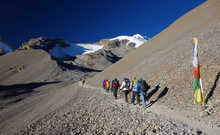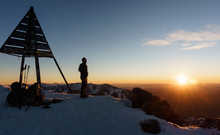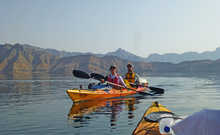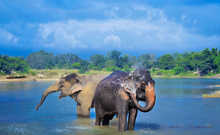Kilimanjaro Gear List
If you’re a regular adventurer, you may feel well equipped
for climbing Kilimanjaro however for some, this may be your very first big
adventure trip.
Below you will find a packing list for Kilimanjaro including
everything you need to climb Kilimanjaro from top to toe. Where possible we
have included links to gear that we personally use and recommend!
You can also read how to take care of yourself on
Kilimanjaro.
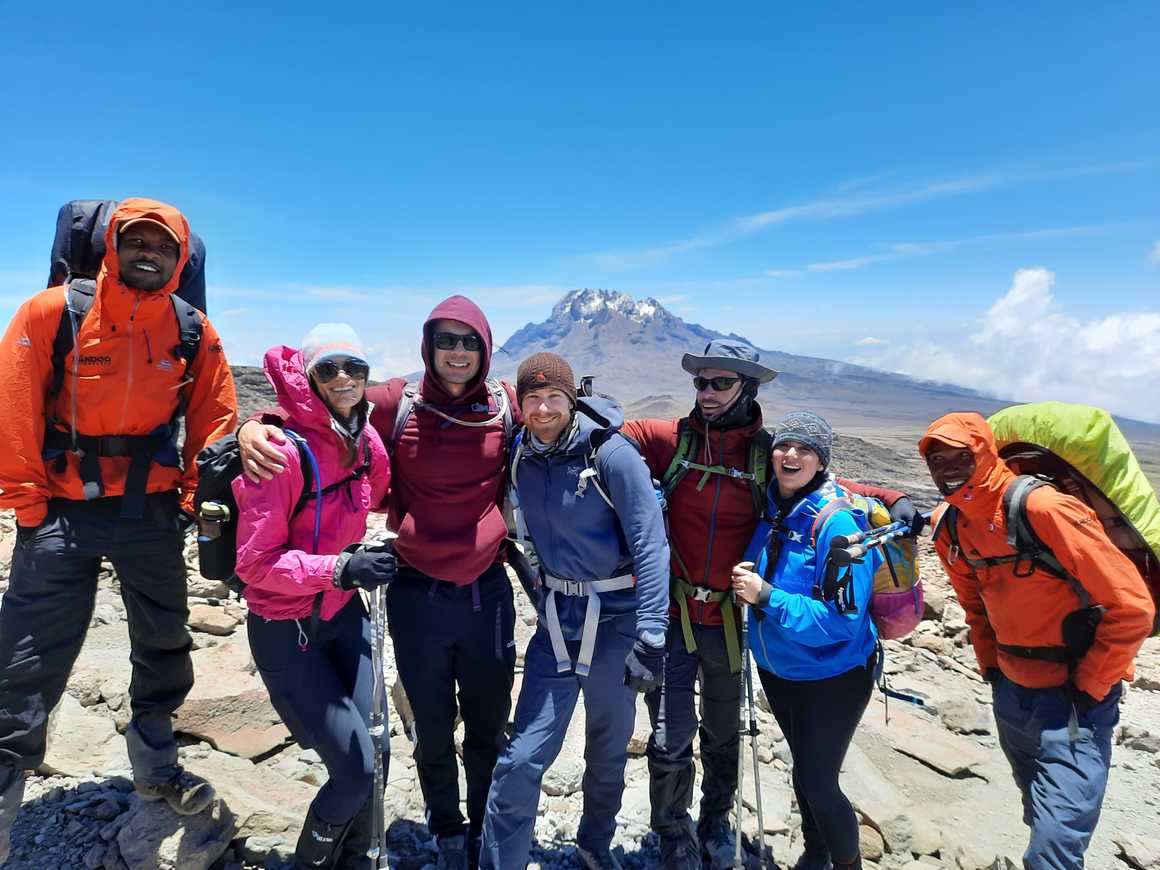
Upper Body
Let’s start with clothing for Kilimanjaro. As any trekker
worth his salt will tell you, getting the right clothing for Kilimanjaro is
paramount to a successful climb. Clothing is of particular importance when
Climbing Kilimanjaro as the ascent passes through 4 climate zones. Whilst the
base of Kilimanjaro has a breezy warm tropical climate, the summit is freezing.
Layering is therefore critical when climbing Kilimanjaro. Not only this, but
each layer must consist of a wickable fabric. Unlike other fabrics such as
cotton, wickable fabric allows moisture to pass from one layer to the next.
- Thermal or fleece base layer (x1)
An obvious place to start with the Kilimanjaro kit list is
thermals and base layers. As you get higher up Kilimanjaro, inevitably the
weather gets colder. Here you will need a lightweight base (or skin) layer ideally
merino wool, not cotton, as merino base layers help to regulate your core temperature
and are highly moisture wicking fabrics. This means it pulls moisture away from
your skin by absorbing it into the fibres and evaporates through the exterior.
- Long sleeve shirt/tshirt - light or medium weight, moisture wicking (x 2).
- Short sleeved shirt/tshirt - lightweight, moisture wicking (x2)
Trekking shirts should be breathable, light weight, fast
drying and most importantly - comfortable. They are critical pieces of clothing
for Kilimanjaro as they can be layered over the top of thermals and base
layers. Icebreaker, Patagonia, Craghoppers and Columbia all offer great trekking shirts. We would recommend taking at least 4 shirts, 2 short sleeve, 2 long sleeve.
We would recommend taking at least 4 shirts, 2
short sleeve, 2 long sleeve.
- Fleece or soft shell jacket (x1)
For
the colder sections of the climb your second layer should be a good quality
fleece. Polartec is the best material and comes in 100s, 200s and 300s. We
would recommend the middle weight (200) as it is neither too light nor too
heavy - ideal for Kilimanjaro. A fleece with a hood is also a bonus. Helly Hansen and The North Face offer good quality and affordable fleeces.
- Insulated jacket - down or primaloft
Having
a wind and rainproof jacket is a key item in any Kilimanjaro gear list for
obvious reasons. However, the choices can be a little overwhelming. Insulated
jackets essentially come in two categories - down or synthetic. Whilst down
jackets are generally lighter and warmer, they are far more expensive and,
depending on price, more susceptible to moisture. There is no right or wrong
here, it comes down to personal preference, budget and versatility. We recommend The North Face Nuptse, Resolve or similar.
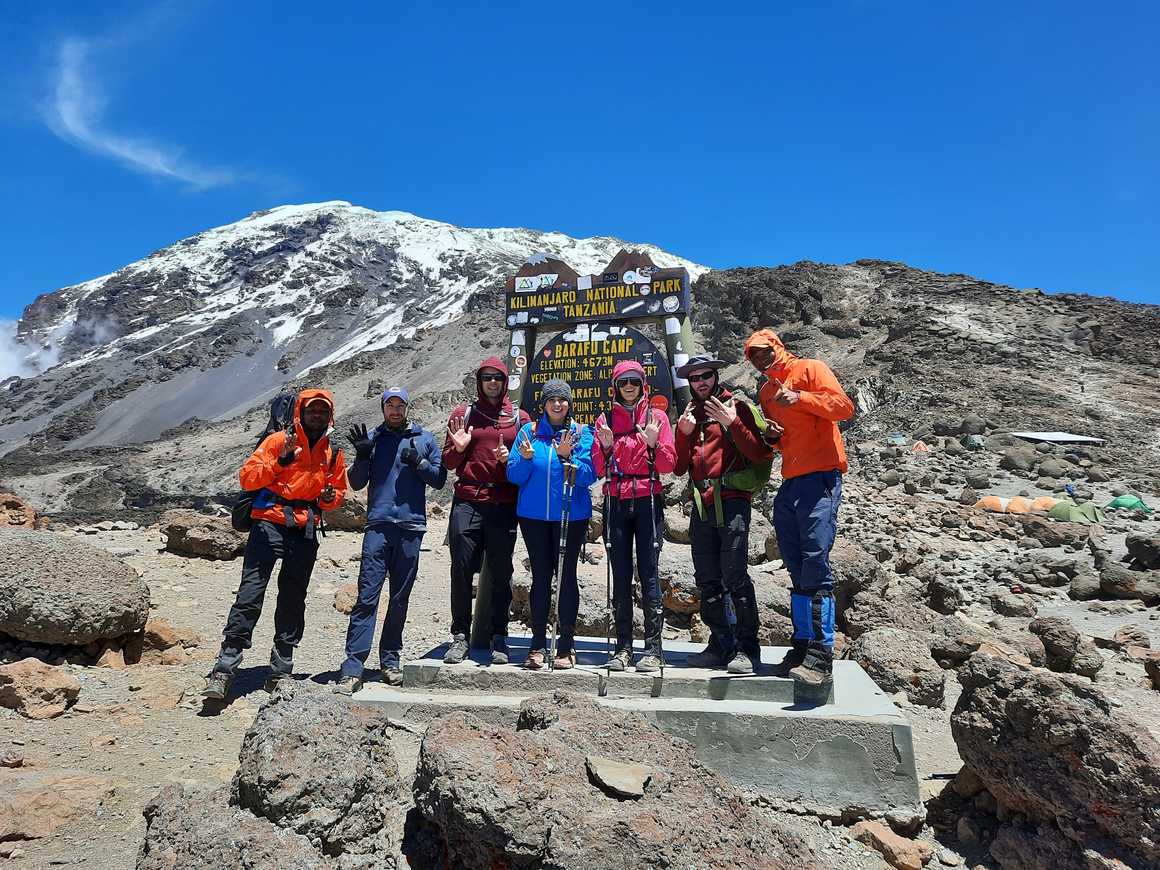
Lower Body
- Leggings - thermal or fleece base layer (x1).
- Trekking trousers - light or medium weight (x2)
Warm
and comfortable walking trousers are crucial items of clothing for Kilimanjaro,
where you will be trekking above 4,500m and the temperature drops dramatically.
Key things to look for in walking trousers include a sun protective and
water-resistant material, inner fleece material and a quick drying polyester
outer layer for warmth. Convertible trousers from Craghopper work well as do good quality ski pants. See Smartwool or Icebreaker base layers.
Hands
- Gloves - lightweight, quick drying fabric (1 pair)
- Gloves - heavyweight, insulated, preferably water resistant (1 pair)
Good
gloves are paramount as your hands will be completely exposed when gripping
your trekking poles. In terms of a perfect Kilimanjaro gear list, we recommend
taking two pairs - one lightweight thermal pair with great wicking properties
(avoid cotton) and one heavyweight, waterproof pair that provide the shell
protection in the colder sections of the climb. We recommend Black Diamond Guide Gloves, Outdoor Research Gloves and Dakine Scout.
Foot wear
- Trekking boots
Walking
is what trekking is all about, therefore, the footwear you choose will be one
of the most important decisions you make on your Kilimanjaro gear list. There
are three key criteria when choosing the best boots for Kilimanjaro – fit,
quality and use. No one wants blisters, so get the fit right! A finger width
behind your heel with toes pressed to the front should be about right. Quality
is a major factor as it's no small hassle having your boots fall apart halfway
up the mountain. Look for good ankle support but remember that the higher the
boot the heavier it becomes. The sole of the boot should have a high rubber
content with deep grooves for grip. Make sure your boot is waterproof with a
lacing system that incorporates D-Strings and speed hooks for tight support,
fast lacing and non-loosening. Remember – the best boots for Kilimanjaro have
been worn in, never turn up to Kilimanjaro or any other major trek with new
boots! We recommend brands such as Asolo, Karrimor, Hi-Tec and Timberland.
- Training shoe or similar
Taking
your boots off after a long trek is a great feeling, however, you still need to
get around the camp and, if you’re anything like us, go for a little explore.
Therefore, some basic training/hiking shoes are the best way to do this. Make
sure they're still good quality and lightweight - you can't go wrong. See Merrell, Columbia, Keen or Karrimor.
- Mid-weight trekking socks (x5 pairs)
- Breathable, high-wicking liner socks (x3 pairs)
- Thermal trekking socks for summit night (x1 pair)
Just
like shoes, socks are very important items of clothing for Kilimanjaro. Once
again, avoid cotton or cotton blended socks as they don’t allow the feet to
breathe. We would suggest taking at least 5 pairs of Merino Wool trekking socks
along with high wicking thermal socks for those colder sections of the trek -
especially at night. We recommend Point6, Smartwool, and Bridgedale.
Headgear
- Warm beanie style hat - knitted or fleece
An absolute must for the cold summit night on Kilimanjaro, a lined and fleeced beanie will keep your head and ears all snugly and warm.
- Neck gaiter or scarf - just so many uses!
Often overlooked when preparing a packing list for
Kilimanjaro, neck gaiters and scarves are great multi-purpose pieces of
clothing that should be on your Kilimanjaro gear list. Not only will they
protect your neck from the freezing wind, but also from the blistering sun and
they are incredibly useful in dusty weather as it can be wrapped around your
nose and mouth for protection. Make sure it is lightweight, quick-drying,
breathable and absorbent.
- Sun hat - preferably wide-brimmed for protection
Keeping your head cool during the hotter moments of trekking is vital, as is protecting your face from sun burn. Therefore, we recommend a wide brimmed hat, preferably with a neck cover and made of a breathable material.
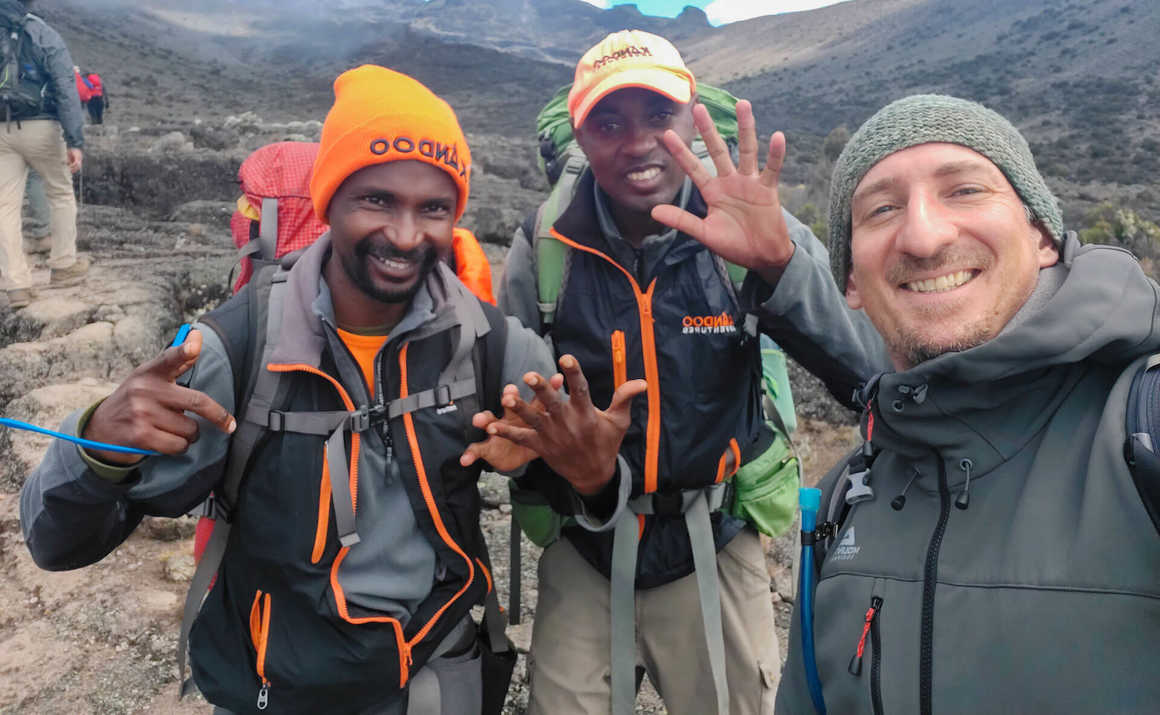
Equipment
- Small Rucksack or Daypack
Now, in this Mt Kilimanjaro packing list, we move onto the
essential equipment. As you'll be carrying your daypack, it’s important to keep
it small and lightweight (25-30 litres). Your daypack will be used to carry
water and personal items such as sunscreen and snacks etc. We don’t recommend
carrying any cash on the mountain due to a spate of thefts a couple of years
ago.
- Waterproof duffle bag
As it holds all of your trekking gear, this is one of the
most important pieces on our Kilimanjaro kit list! Because your duffle bag will
be carried by porters, make sure it weighs no more than 15kg and has a soft
bottom (approx. 80-100 litres). This weight restriction includes your sleeping bag,
whether you bring one with you or you rent one from us. Make sure your bag is
waterproof, has a strong zipper system and hand and shoulder strapping system
for extra versatility. We recommend North Face or Helly Hansen waterproof
duffles.
- Sleeping bag
One of the top priorities on your Kilimanjaro gear list
should be a sleeping bag. Regardless of season, a warm sleeping bag is critical
when climbing Kilimanjaro as no matter the time of year, it’s always freezing at
the top.
We provide a comfortable foam mattress, but you may like the
additional comfort and warmth of a Thermarest sleeping mat. These can be bought
on Amazon.
We provide a comfortable foam mattress but you may like the additional comfort and warmth of a Thermarest sleeping mat. These can be bought on Amazon.
- Trekking poles
No Kilimanjaro gear list would be complete without trekking poles. With an average trek length on Kilimanjaro of 7 days, your legs and joints are put under a lot of stress. The best way to reduce this is by using a good set of trekking poles. Things to look for - weight (heavier is better for longer treks, adjustability (look for fully adjusting), material (lightweight aluminium or carbon fibre is best) and grip (we would suggest rubber or foam for Kilimanjaro). We recommend trekking poles from Black Diamond. You can also rent trekking poles from us in Tanzania.
- Water bottle or hydration bag
You
need to stay well hydrated and should drink between 2-3 litres per day. We ask everyone
to carry 3 litres of water every day. We recommend Camelbak Water Bottles or Platypus Hydration Bags. The drinking pipe on a water bladder will start to freeze above 5000m, so even if you rely on a water bladder for the rest of the climb you will need a water bottle as a back up for summit night.
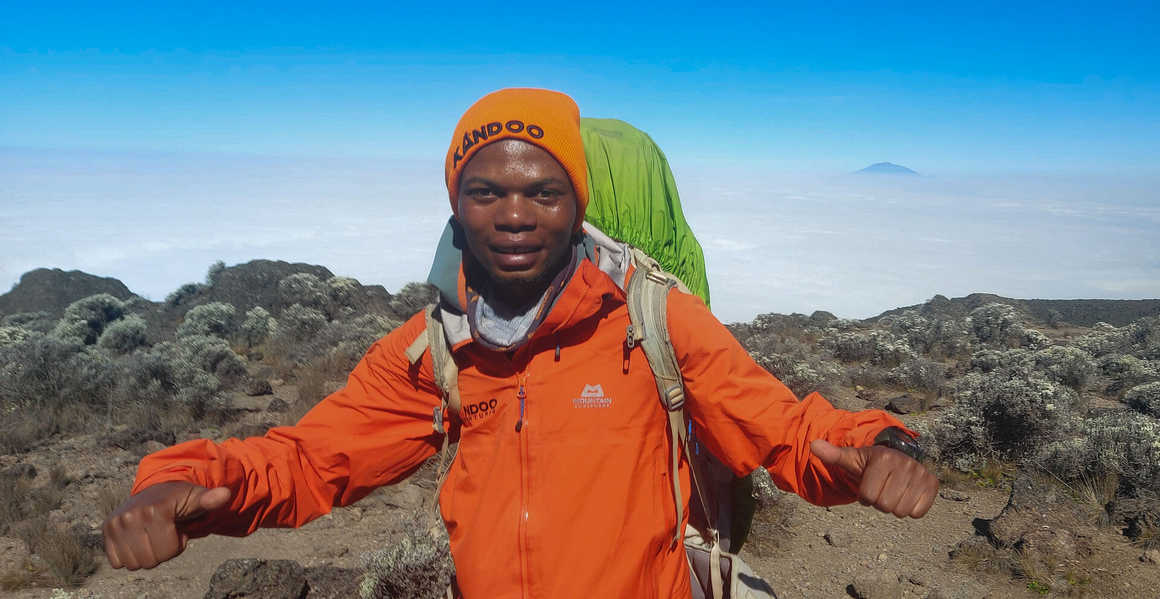
Accessories
- Sunglasses
- Headlamp (plus extra batteries)
- Sunscreen
- Toiletries, including wet wipes and hand sanitiser
- Camera and spare batteries
- Personal medication and first aid kit
It is very much personal preference on what medication you
take with you. However, after trekking Kilimanjaro a number of times, we
believe a Kilimanjaro gear list requires 3 main medications. We suggest taking Paracetamol
for headaches, Imodium for diarrhoea and an appropriate antihistamine for
vomiting or nausea. We would also strongly recommend bringing some plasters for
any blisters and insect repellent.
- Personal snacks
- Ear plugs
- Pee bottle
- Phone Survivor Case
That's it folks. Remember - comfort is key! Make sure you try out all your Kilimanjaro gear before trekking the mountain itself. Good luck.
References: Climb Kilimanjaro Guide, The North Face
